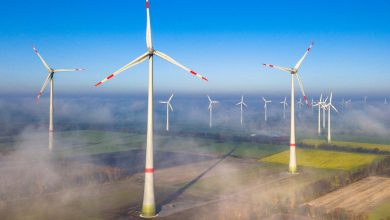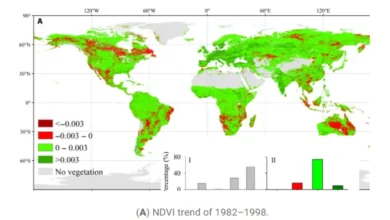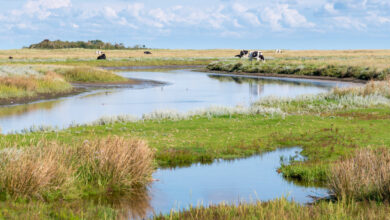New approach to energy policy

Originally published March 13 in Spectator Australia
Current energy policy in Australia is based on the argument that a drastic reduction in greenhouse gas emissions is needed and as part of this, renewable energy should replace coal and gas for electricity generation.
Both of these arguments need to be challenged and a new approach to Australian energy policy is needed.
Scientists agree that greenhouse gas emissions contribute to global warming, but are they the main drivers of warming?
This issue is hotly debated, with natural climate change also an important issue to be considered.
Natural variations in heating and cooling were evident several thousand years ago and are almost certainly still with us today. Although not fully understood, they are probably of solar origin.
For example, there were periods of global warming and cooling in Roman times (circa 250 BC to AD 400) and in the Middle Ages (circa 950 AD to 1250 AD).
In Roman and Medieval times, global temperatures rose (before falling) as much as in our time – a little more than 1 degree Celsius.
After 1300 AD, global temperatures dropped overall until the 1800s, but with cycles of rise and fall overlapping the trend.
Greenhouse gas emissions, which only began to increase after 1850, are not related to past temperature changes.
Today, it is thought that natural variations in warming and cooling have a much larger impact on global temperatures than emissions.
If so, reducing emissions would make very little difference to global temperatures in the 21st century.
The government’s relentless pursuit of lower emissions is inconsistent with these unresolved issues.
The current energy policy (Net Emissions by 2050) requires that we eventually rely entirely on renewable energy – especially solar and wind farms – for electricity.
However, this would require battery support which, for an entire country or even a state, would be very expensive.
To illustrate, a large Tesla battery installed in South Australia in 2017 at a cost of $100 million will power that state in less than half an hour.
On this basis, to power Australia from batteries alone for one week, for example, would require batteries costing more than $500 billion.
This is roughly equal to the total federal government spending in the last fiscal year.
And even a week would be less than needed to cover periods of weak or non-existent solar and wind power.
Furthermore, wind and solar power is proving expensive, with the price of electricity in Australia for consumers having tripled since 2000, moving from the lowest in the world to the highest.
Reasons for this include:
- High transmission costs are often associated with renewable energy.
- The need for renewable energy backup with coal or gas plants operating below capacity and therefore high unit costs.
- The costs required to maintain frequency stability in the power grid.
Renewable energy would be a niche industry, but for federal and state government subsidies it’s $6-8 billion per year. These subsidies will only increase if renewables become increasingly important.
That’s not a good way forward.
This is a suggested change in direction.
First, phase out all subsidies for renewables over (say) three years. Applying the principle that the energy industry must operate on a competitive basis, no particular technology is prioritized by the government.
Second, use the money saved to set up two new major research institutions in Australia.
One of them will look at new technology for low-cost, reliable electricity generation (Electricity Forum). This means technology to successfully compete with coal.
Such technology in itself would not only be valuable, but would be much more responsive than renewables, a concern of those worried about fossil fuels.
The other will focus on improving our understanding of climate science (Climate Forum). This is meant to address the question: to what extent should we care about greenhouse gas emissions?
Both organizations have the potential to be world leaders in their respective fields. Here’s how spending 6-8 billion dollars a year is much more exciting than building more wind and solar farms than ever before.
Third, remove all impediments to new coal and gas development in Australia (apart from those arising from the normal planning process).
Fourth, open discussion of nuclear energy in Australia, possibly through a royal commission on the matter. If full community agreement on nuclear energy is reached, plan for the first commercial nuclear plant to be developed in the 2030s.
Possible location: Latrobe Valley in Victoria, which has the skilled staff and transmission infrastructure to support an economically viable nuclear power plant.
And this is being ravaged by Labor-induced closures and plans to close four major coal-fired power plants: Hazelwood (2017), Yallourn (2028) and Loy Yang A and Loy Yang B (early years). 2030).
The adoption of these proposals will not end the ‘climate war’, as they will be strongly opposed by a number of people, including a growing number of organizations and individuals with special concerns. especially renewable energy.
However, the proposals give Australia the long-term possibility of reliable, low-cost electricity and other forms of energy. And the ability to host two of the world’s leading research institutions in the fields of climate and energy.
The current policy does not provide these capabilities.
Brian Wawn is director of the Department of Energy, a not-for-profit organization committed to encouraging discussion in Australia on climate and energy-related issues.




